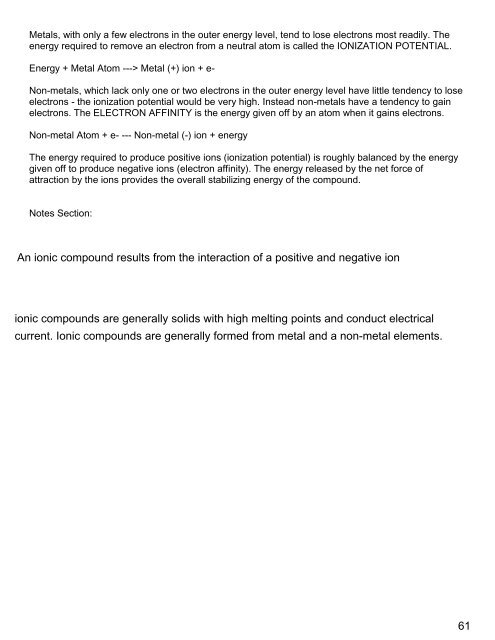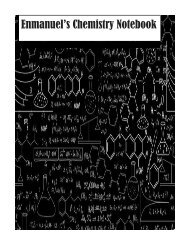Create successful ePaper yourself
Turn your PDF publications into a flip-book with our unique Google optimized e-Paper software.
Metals, with only a few electrons in the outer energy level, tend to lose electrons most readily. The<br />
energy required to remove an electron from a neutral atom is called the IONIZATION POTENTIAL.<br />
Energy + Metal Atom ---> Metal (+) ion + e-<br />
Non-metals, which lack only one or two electrons in the outer energy level have little tendency to lose<br />
electrons - the ionization potential would be very high. Instead non-metals have a tendency to gain<br />
electrons. The ELECTRON AFFINITY is the energy given off by an atom when it gains electrons.<br />
Non-metal Atom + e- --- Non-metal (-) ion + energy<br />
The energy required to produce positive ions (ionization potential) is roughly balanced by the energy<br />
given off to produce negative ions (electron affinity). The energy released by the net force of<br />
attraction by the ions provides the overall stabilizing energy of the compound.<br />
Notes Section:




